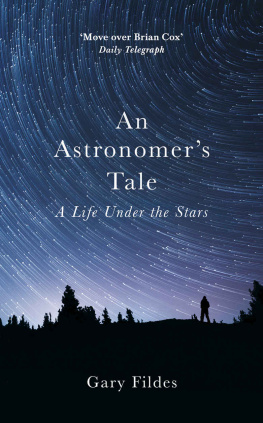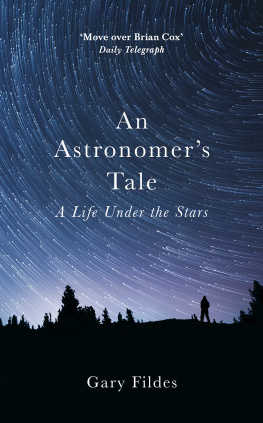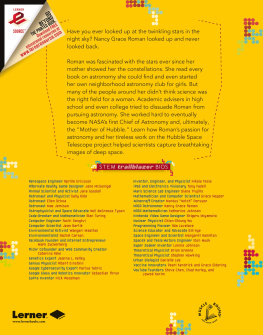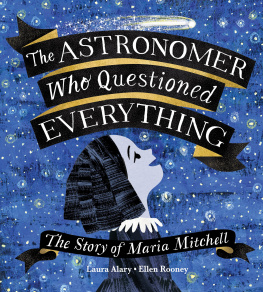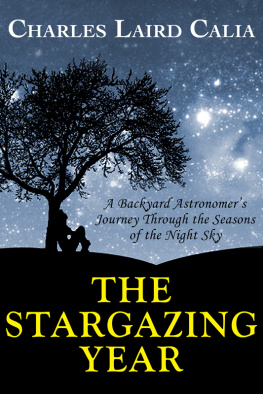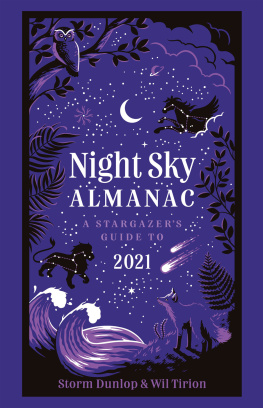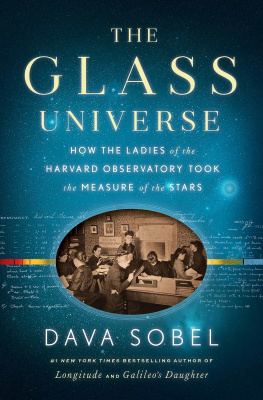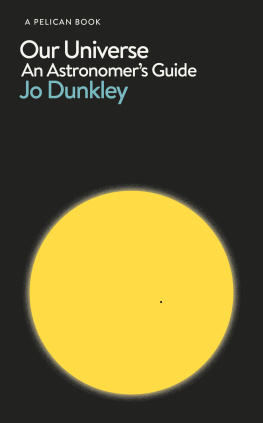Contents
About the Book
A Bricklayers Guide to the Galaxy
Gary Fildes left school at sixteen, got a trade like most of his mates and was soon married with four kids. His life seemed set. But he had a secret. Something he only practised late at night with a few like-minded friends. Then one day, middle age approaching alarmingly, he acted on his lifelong passion. He finally came out. As an astronomer.
Today, Gary is the founder and lead astronomer of Kielder Observatory, one of the top ten stargazing sites in the world, which he also helped to build. Situated in the beautiful forests of Kielder, Northumberland, within Europes largest protected dark sky park, it offers some of the UKs most spectacular views of stars, planets and galaxies.
An Astronomers Tale is Garys inspirational story: part memoir, part nature writing, part seasonal guide to the night sky. It is a book brimming with passion; and at a time when the world is captivated by space, it will leave you ready to get out there and explore the wonders of the skies for yourself.
About the Author
Gary Fildes was born in Sunderland. A former bricklayer, he is the founder and lead astronomer of Kielder Observatory. Among the worlds best sites for stargazing, it receives over 20,000 visitors a year, with its mission to educate, inspire and enthuse the public. In 2012 Gary was given an honorary masters degree from Durham University in recognition of his services to astronomy. He is currently leading a multimillion-pound fundraising drive to make Kielder the worlds biggest public observatory.
Follow the observatory on Twitter: @kielder_obs
An Astronomers Tale
A Life Under the Stars
Gary Fildes
Dedicated to the working people of the North-East: the builders and the plumbers, the nurses and the soldiers, the mams and the dads. If you once dreamed of space, of being able to fly to the moon, dare to dream again.
Authors Note
AS WELL AS chronicling my life story in astronomy, this book offers seasonal bi-monthly stargazing guides to the constellations, which include star charts. Structured into alternate chapters between the autobiographical narrative, these bi-monthly night-sky chapters can be read in or out of sequence, and each one spans four constellations that can be observed in the northern hemisphere, as well as one other celestial object.
Below is a key to these bi-monthly night-sky sections. Elsewhere in the book, in the autobiographical narrative, I will also discuss other celestial objects and practical tips about astronomy.
For additional information, at the back of the book is an , which suggests other learning resources.
KEY
 | Naked-eye, or unaided-eye stargazing |
 | Deep-sky objects that require a pair of binoculars or telescope |
Preface
IT IS 5.45 P.M. and I get in my car and leave home as usual. I always enjoy this hour-long drive away from the urban sprawl of Newcastle, away from the houses and the busyness of the city. A calming silence descends on me as the cars headlights shine out in front, guiding me along the empty country lanes. I join the A68, or the Military Road, a reminder of times long gone: it was originally laid by the Roman army and used as a passage between York and Scotland. I trace the winding route as it cuts through Hadrians Wall, dissecting vast cornfields, and continues up and over ancient hills. Stretching out far in front, the hedge-lined road leads me unerringly north. I open the drivers window slightly and feel the air. Its fresh and cold and fast. As I bound over the crest of another hill, the front wheels briefly clear the ground. On the descent I get the first glimpse of open countryside.
It is bursting with life. A pair of deer pauses fleetingly; pheasants totter by dangerously close to the roadside. The fields to my left are populated with tiny low-lying clouds of white wool; the lambs are appearing. A few spring and trot alongside the hedges until they spot the car and race off to Mam and the safety of her back. Soon pine trees surround me. The Sitka spruces are tall and grand and line the road like sentinels. They signify something special for me. Dark-Sky Guardians, as I like to think of them. I have been transported to the plains of Scandinavia. Gently rounding another corner, I see water like glass off to my right. The lake is vast. I marvel that it is man-made and built in the heart of Kielder Forest in Northumberland. Apparently it is the largest in Europe. An osprey soars high above and in the distance I can just make out what appears to be a flock of birds flying off towards the approaching night. It is already getting dark as I strain my eyes through the windscreen to see the first stars appearing from the twilight. Only the hum of the cars engine reminds me that I have work to do, that I have a group of visitors waiting.
Its just past 6.45 p.m. when I slam the door and walk along the sandy gravel path. Im buoyed up by the latest weather forecast, suggesting it will be a clear evening. The air is crisp and I take another big lungful as I habitually raise my head skywards. Ursa Major, or the Great Bear, gently growls at me, shining brightest. Radiating out from within the constellation is an asterism in the familiar shape of a cooking utensil. Her body and tail constitute the pan and its handle, seven stars that resemble a dot-to-dot of what you would find on your kitchen cooker. I can see the bright blue hue of Alcor and Mizar, two distant energetic balls of hot rarefied gas that form a part of the handle of the pan, held together by gravity. My eye then finds two stars in the head of the pan, Merak and Dubhe. They are important: they point the way to Polaris, the North Star, the position in the sky that represents our planets rotational axis. As you might guess, it also points directly north, so if you get lost at night, knowing its position could save your life. I watch as Merak and Dubhe twinkle gentle hues of yellow and amber and then blue again as our atmosphere distorts the faint light from these distant suns. I know the constellation that contains this asterism, or pattern of stars, well; its familiar and I feel welcomed, as if receiving a respectful nod from across the room by an old friend. Even if that friend is a bear.
The sky is changing again now as darkness falls faster and the Sun sets over the horizon. I can see the bright glare from Venus as it reflects the days remaining sunlight through its thick, cloudy atmosphere of carbon dioxide. It is so bright an array of colours dances in the golden light of the sunset. Above is Jupiter, shining softly and not as brightly. At over 350 million miles away, this behemoth of a planet, the largest in our solar system, follows Venus effortlessly down towards the horizon. But it is now nearly 7 p.m.; I really have to get to work.
As I approach the observatory, the inky black sky stretching out around it, I hear in the background the comforting whirl of the wind turbine which powers our observatory and array of telescopes. The timber structure is perfectly silhouetted against Deadwater Fell in the east with a distant listening post for the RAF perched on its summit. The two square observatory turrets that house the telescopes rise proudly from the base of the building, separated by the observation deck used to stare up into the cosmos. In some ways, the observatory resembles a futuristic ship sailing out into the universe, with its minimalist shapes and clean corners dominating the surroundings. The larch cladding, which protects the telescopes residing in the turrets, is standing and fixed vertically, nailed into a defensive poise.

